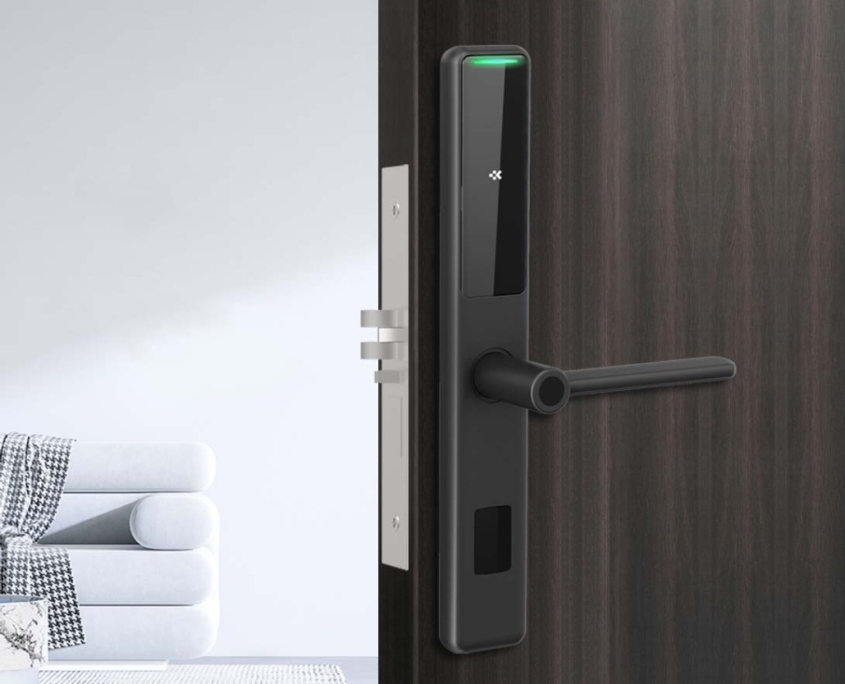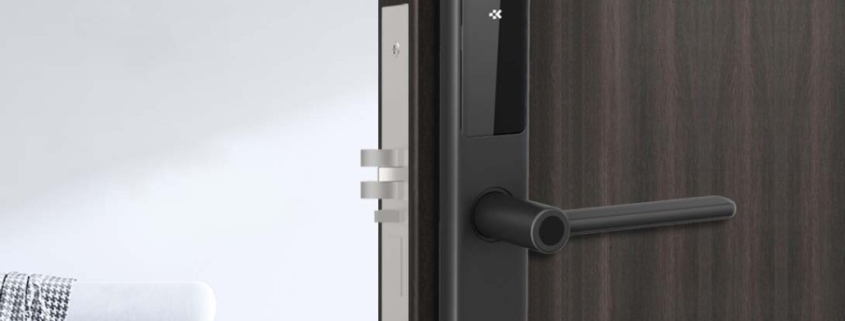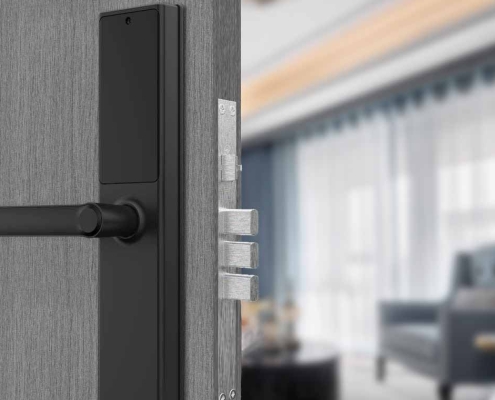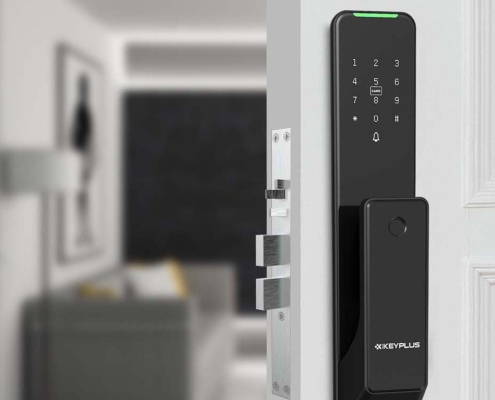What is the difference between keypad locks and smart locks?
In an era where convenience and security are paramount, American homeowners face an important decision when upgrading their door locks: keypad or smart lock? With 28% of U.S. burglaries involving unlawful entry through front doors (FBI Crime Data), choosing the right locking system has never been more critical. This comprehensive guide will break down the key differences between these two popular options, helping you make an informed decision based on your lifestyle, budget, and security needs.
Understanding Keypad Locks: The Reliable Workhorse
What Defines a Keypad Lock?
Keypad locks represent the bridge between traditional keyed locks and fully digital systems. These mechanical-electronic hybrids feature numbered buttons (typically 0-9) that require a predetermined sequence to unlock the door. Unlike smart locks, they operate as standalone devices without internet connectivity or remote access capabilities.
How Keypad Locks Work
-
Physical Interaction: Users press numbered buttons in a specific sequence
-
Local Processing: The lock’s internal mechanism verifies the code
-
Mechanical Release: Successful code entry triggers the bolt to retract
-
Power Source: Most operate on standard AA or AAA batteries (lasting 1-2 years)
Advantages of Keypad Locks
-
No keys to lose: Eliminates lockouts from misplaced keys
-
Easy code sharing: Provide temporary codes for house guests or service workers
-
Weather resistant: Performs well in extreme temperatures (unlike some smart locks)
-
Lower cost: Typically 100−200 versus 150−400 for smart locks
-
Simple installation: Most homeowners can install in under 30 minutes
-
Long battery life: Often lasts twice as long as smart lock batteries
Limitations to Consider
-
Limited user management: Usually only 4-8 user codes maximum
-
No remote access: Can’t unlock your door for guests while you’re away
-
Basic security features: Lacks activity logs or tamper alerts
-
Vulnerable to code observation: Shoulder surfing or fingerprint smudges may reveal codes
Exploring Smart Locks: The Connected Guardian
Defining Smart Lock Technology
Smart locks represent the cutting edge of residential security, combining physical locking mechanisms with digital connectivity. These devices integrate with your home Wi-Fi network and smartphone, offering features far beyond simple keyless entry. According to Statista, 43% of U.S. smart home owners now use smart locks—a number projected to grow significantly by 2025.
Core Smart Lock Features
-
Mobile App Control: Lock/unlock doors from anywhere via smartphone
-
Voice Command Integration: Works with Alexa, Google Assistant, or Siri
-
Advanced User Management: Create unlimited virtual keys with custom permissions
-
Real-Time Alerts: Receive notifications when doors are accessed
-
Auto-Locking: Programmable automatic locking after set time periods
-
Activity History: Detailed logs of all lock/unlock events
Benefits That Justify the Higher Price
-
Keyless convenience: Never worry about lost or copied keys again
-
Remote access: Let in cleaners, dog walkers, or family members from your office
-
Temporary access: Grant time-limited entry for contractors or Airbnb guests
-
Home automation: Integrates with other smart devices (lights, thermostats, etc.)
-
Enhanced security: Tamper alerts and forced entry detection
-
Insurance discounts: Some providers offer 5-10% off for smart lock installation
Potential Drawbacks
-
Higher initial cost: Quality models start around $200
-
Network dependence: Requires stable Wi-Fi for full functionality
-
Shorter battery life: Typically 3-6 months versus 1-2 years for keypad locks
-
Learning curve: Some users struggle with initial setup
-
Privacy concerns: Data collection practices vary by manufacturer
Head-to-Head Comparison: Key Differences That Matter
1. Installation Process
Keypad Locks:
-
Usually complete handle/deadbolt replacements
-
Standard door preparations (2-1/8″ bore hole)
-
Most homeowners can DIY in under an hour
-
No technical knowledge required
Smart Locks:
-
Some replace entire deadbolts, others attach to existing hardware
-
May require adjustment of existing mechanisms
-
Wi-Fi setup and app configuration adds complexity
-
20% require professional installation for optimal performance
2. Daily User Experience
Keypad Locks:
-
Physical button pressing (can be challenging in poor lighting)
-
No connectivity means no remote features
-
Simple operation ideal for elderly or tech-wary users
-
Always works regardless of internet outages
Smart Locks:
-
Multiple access methods (app, voice, auto-unlock)
-
Remote management via smartphone
-
Geofencing can automate locking/unlocking
-
Potential frustration during Wi-Fi disruptions

3. Security Features Compared
| Feature | Keypad Lock | Smart Lock |
|---|---|---|
| Physical Tamper Resistance | Good | Excellent |
| Code Observation Risk | Moderate | Low (with auto-code rotation) |
| Remote Monitoring | None | Real-time alerts |
| Access Logs | Basic (if any) | Detailed digital records |
| Hacking Vulnerability | Physical only | Digital and physical |
| Emergency Power Options | Limited | Often includes micro-USB port |
4. Cost Analysis Over 5 Years
| Expense | Keypad Lock | Smart Lock |
|---|---|---|
| Initial Purchase | 120−180 | 200−350 |
| Installation | $0 (DIY) | 0−150 |
| Batteries (5 yrs) | 10−20 | 30−50 |
| Maintenance | Minimal | Potential app subscriptions |
| Total | 130−200 | 230−550 |
Which Lock Type Suits Your Lifestyle?
Ideal Scenarios for Keypad Locks
-
Vacation Homes: Reliable security without network requirements
-
Rental Properties: Easy code changes between tenants
-
Elderly Family Members: Simple operation with no apps needed
-
Budget-Conscious Buyers: Quality security at lower cost
-
Extreme Climates: Better performance in very hot/cold regions
When Smart Locks Shine
-
Tech-Savvy Households: Those comfortable with app management
-
Families with Teens: Flexible access without key distribution
-
Frequent Travelers: Remote monitoring provides peace of mind
-
Home Automation Enthusiasts: Integration with other smart devices
-
Airbnb Hosts: Easy temporary access management
Installation Tips for American Homes
Keypad Lock Installation Checklist
-
Verify door thickness (standard U.S. doors are 1-3/8″ to 1-3/4″)
-
Ensure proper backset measurement (2-3/8″ or 2-3/4″)
-
Check door alignment to prevent sticking
-
Have lithium batteries ready (better performance in temperature extremes)
Smart Lock Setup Advice
-
Test Wi-Fi signal strength at door location
-
Consider a Wi-Fi extender if signal is weak
-
Download manufacturer app before installation
-
Enable two-factor authentication for security
-
Set up emergency backup access method
Maintenance and Troubleshooting
Keeping Keypad Locks Functional
-
Clean keypad monthly with mild cleaner
-
Change codes seasonally or after guest visits
-
Replace batteries proactively (don’t wait for failure)
-
Lubricate mechanism annually with graphite powder
Smart Lock Best Practices
-
Update firmware whenever available
-
Monitor battery level through app
-
Review access logs monthly
-
Test physical override key periodically
-
Reboot occasionally to clear any software glitches
Making Your Decision: Key Questions to Ask
-
How comfortable are you with technology?
-
Do you need remote access capabilities?
-
What’s your budget for purchase and maintenance?
-
How important is home automation integration?
-
Who needs access to your home (kids, elderly, service providers)?
Final Verdict: Balancing Convenience and Practicality
For most American homeowners, smart locks offer compelling advantages that justify their higher price—especially for primary entry points. The ability to remotely manage access, receive real-time alerts, and integrate with other smart home devices provides both security and convenience that keypad locks can’t match.
However, keypad locks remain excellent solutions for secondary entrances, vacation properties, or those preferring simpler technology. Their reliability in all weather conditions and longer battery life make them practical choices for many situations.
Ultimately, the “better” option depends entirely on your specific needs. Many security experts recommend using both—a smart lock for your front door and keypad locks for garage or back doors. This hybrid approach provides the benefits of smart technology while maintaining reliable alternatives should network issues arise.
Whichever you choose, remember that no lock makes your home impregnable. The most effective home security combines quality locks with proper lighting, visibility, and neighborhood awareness. Invest in good locks, use them properly, and you’ll significantly enhance your home’s protection while enjoying modern convenience.









